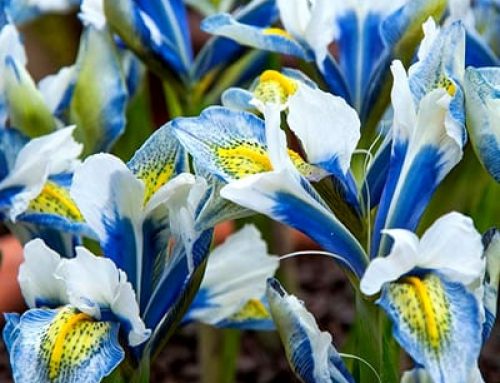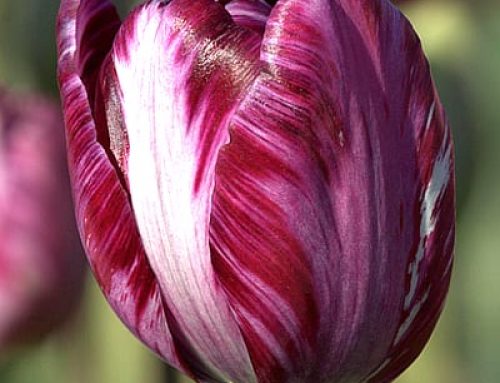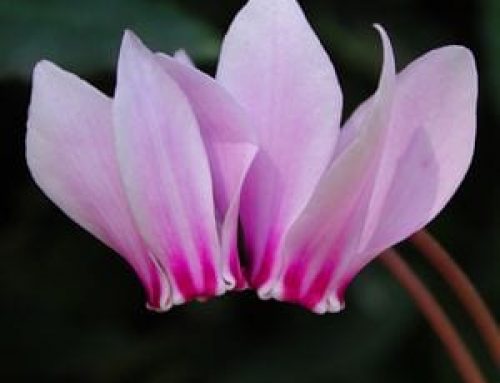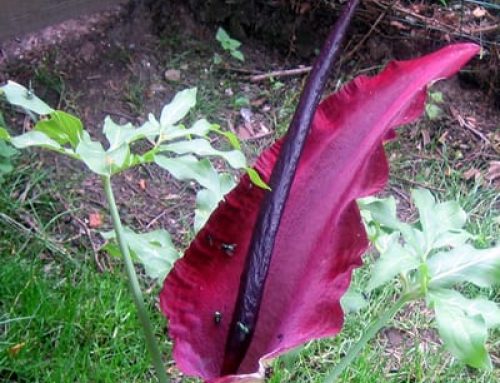Colchicum
The Autumn Crocus
The autumn crocus is not a crocus at all though they look similar. Colchicum is a group of bulbs from the Colchicaceae, a family famed for producing colchicine with a long history of medicinal use — usually to reduce inflammation — dating back as far as 1500 BC! Indeed, colchicine is still used today to treat various ailments including gout, pericarditis, and atrial fibrillation. However, please consult your doctor before eating your autumn crocus!
In the garden, Colchicum, which is also called meadow saffron, is a beautiful and intriguing bulb with two seasons of interest. In the spring, lush, green, shiny leaves arise from the colonies of bulbs. They form large groups of lance-shaped foliage about 6-10 inches high with an almost tropical look. Yet, by summer, these leaves turn yellow, dry up, and go dormant to give the bulbs a summer rest. Later-emerging and trailing perennials like Geranium sanguineum, G. ‘Ann Folkard’, and G. ‘Rozanne’, wine cups (Callirhoe involcrata), and California fuchsia (Zauschneria) or ground covers like Ajuga, woolly thyme, and Veronica ‘Waterperry Blue’ make great companions that can fill in the space vacated by the retreating autumn crocus.
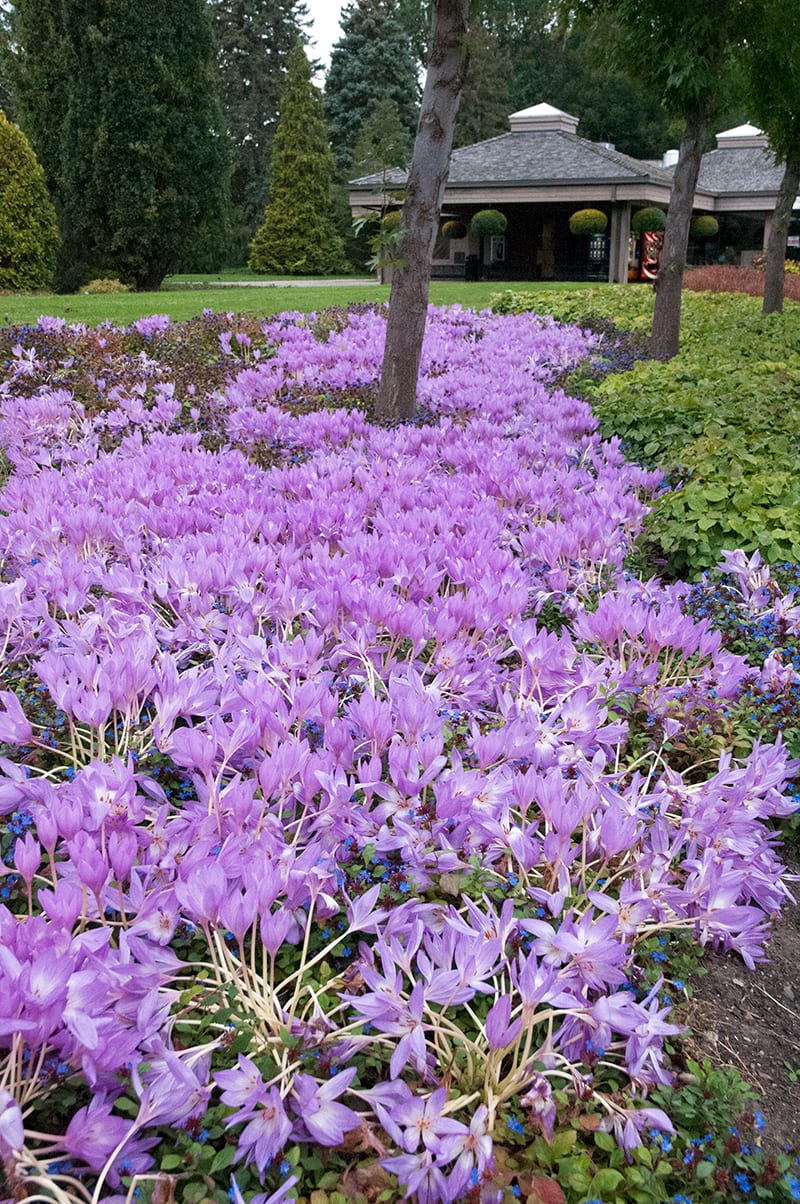
Colchicum ‘The Giant’ mass planted to great effect and in full bloom in Ontario in early October at the Niagara Parks Botanical Garden.
Then, in fall, seemingly out of nowhere and with no leaves in sight, the bulbs produce beautiful, large, crocus-like flowers in shades of white, pink, and purple-pink. There are also bicolours and species with tessellated patterns. These cheerful tones brighten up the September and October garden, especially when planted en masse.
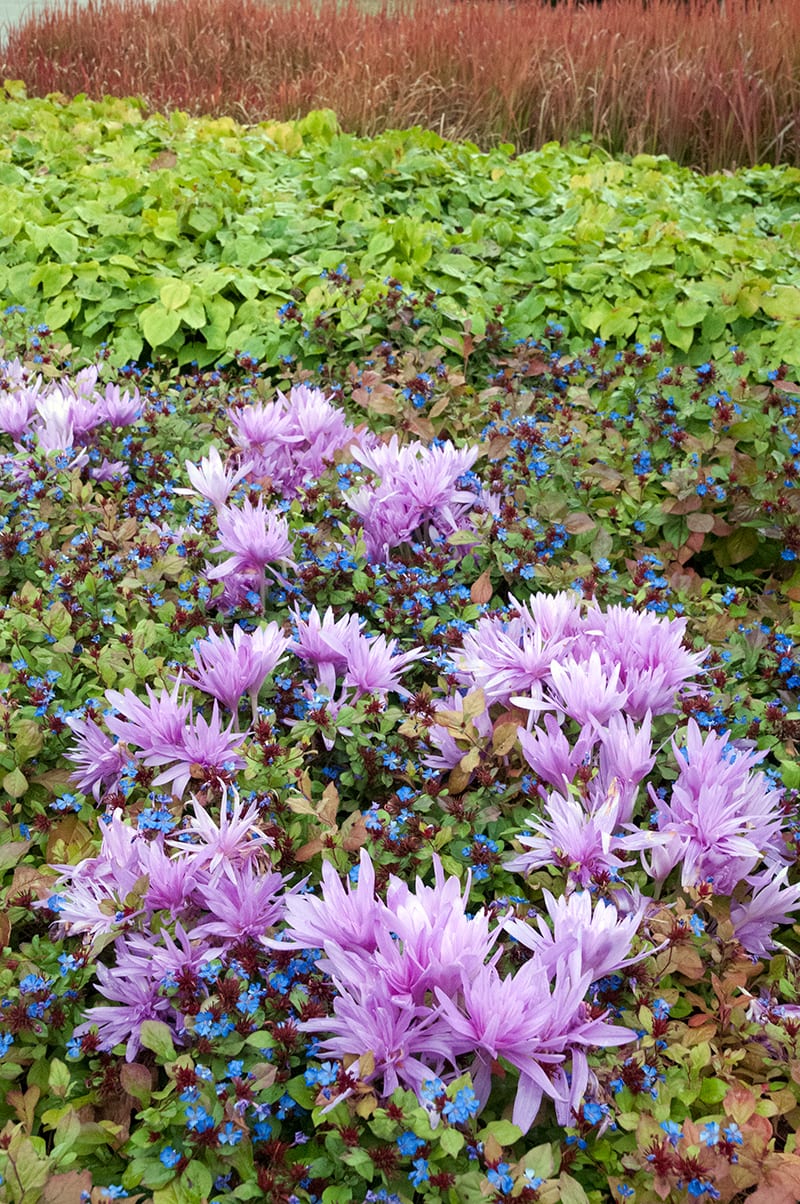
Colchicum ‘Waterlily’ planted amongst Ceratostigma plumbaginoides and in full bloom in early October at the Niagara Parks Botanical Garden.
Colchicum can be grown in full sun to part shade in average to rich, free-draining soils of average to even moisture. They can be divided every 3-5 years when clumps become crowded, especially if the number of flowers is beginning to decrease. Give them a bulb fertilizer when in leaf in the spring.
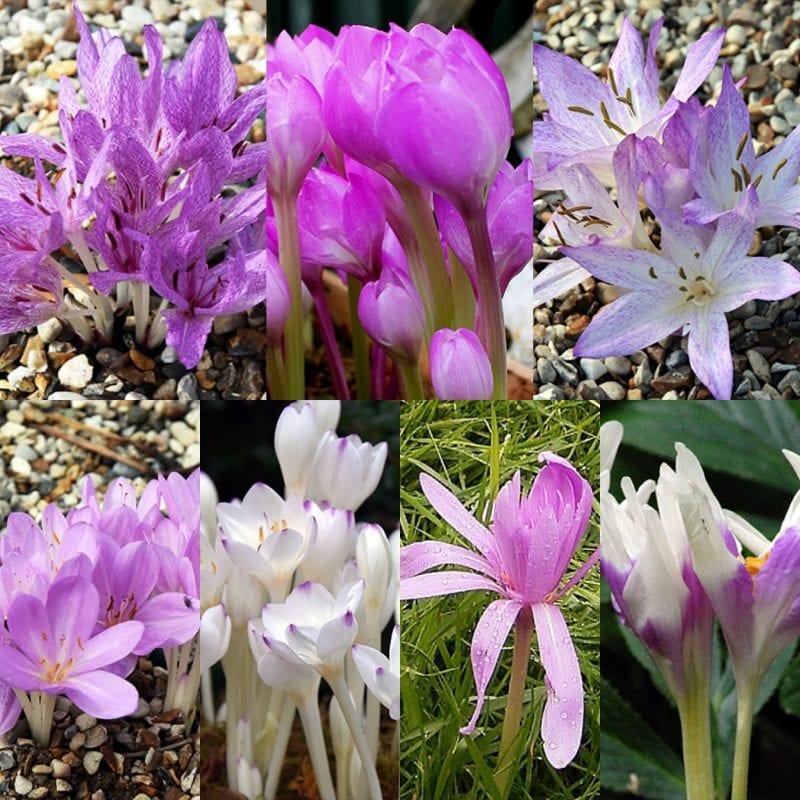
Top row (left to right): C. x agrippinum, C. speciosum ‘Atrorubens’, C. macrophyllum.
Bottom row (left to right): C. byzantinum, C. byzantinum ‘Innocence’, C. autumnale ‘Pleniflorum’, C. ‘Harlekijn’.
Autumn crocus are native to Europe, western Asia, and Africa. There are some 160 different species found in the wild, a number of which make beautiful and easy garden plants. There are also double forms and hybrids which add to the variety of forms. If you’re a fan of Colchicum, you might also want to grow a spring-blooming relative, Bulbocodium vernum, known as spring meadow saffron. In fact, it may be a Colchicum after all, having recently been renamed as C. bulbocodium. Whatever the name, it is a beautiful addition that will bookend the gardening season with the intriguing family Colchicaceae!
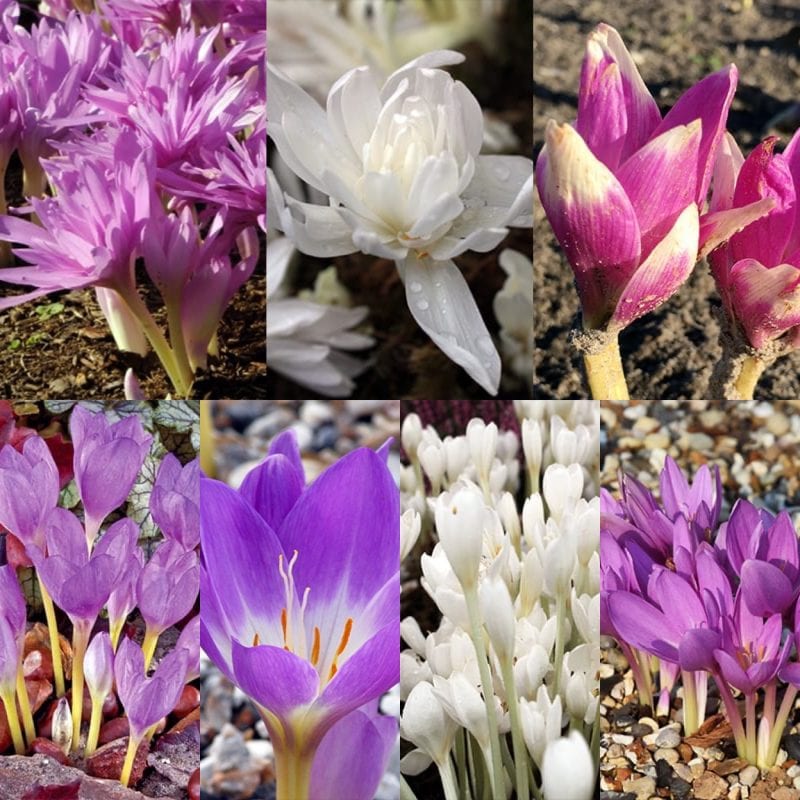
Top row (left to right): C. ‘Waterlily’, C. autumnale ‘Alboplenum’, C. ‘Jarka’.
Bottom row (left to right): C. ‘The Giant’, C. ‘Violet Queen’, C. autumnale ‘Album’, C. autumnale ‘Nancy Lindsay’.
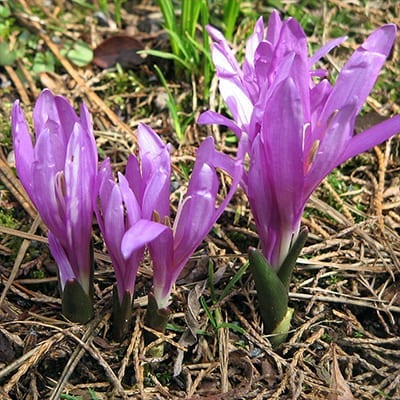
Bulbocodium vernum, the spring meadow saffron, blooms in spring rather than fall. It has just been renamed Colchicum bulbocodium.
At Phoenix Perennials, we carry 12-15 different species and cultivars of Colchicum every year. The largest selection is available for ordering through the summer as part of our Rare Bulbs Pre-Order for pick-up or shipping in the fall. We may also have some available in the spring if supplies last.

